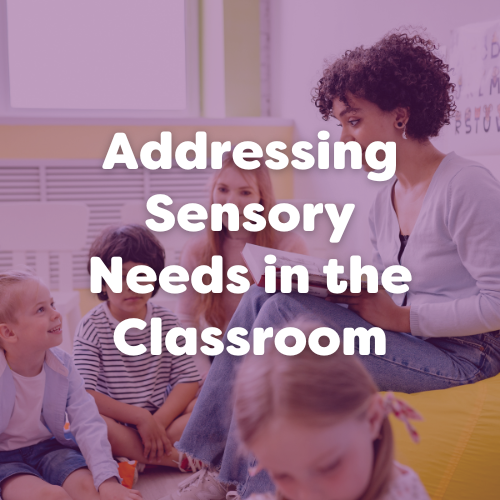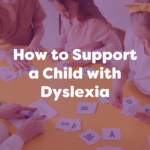As early years educators, it is essential to create an environment that caters to the needs of all students. By addressing sensory needs in the classroom through a holistic and whole-classroom approach we can significantly improve the learning journey for all children regardless of if they are neurodivergent or neurotypical.
In this blog, we will focus on 3 key areas, visual, auditory and olfactory sensory needs. We will provide practical tips and strategies to create a classroom that is conducive to learning, while also ensuring that children’s sensory needs are met. Read on to explore how lighting, displays, music, and even smell can affect learning, and how we can use this knowledge to create a positive and inclusive learning environment for all our students.

What are sensory needs?
Our sensory systems allow us to experience the world through information we receive as input. This can be through visual, auditory or even tactile sensations such as the feeling of a school jumper. Too much input from the environment can make it difficult to process information and cause a sensory overload which is why it is important to create a classroom environment that considers how children respond to different inputs. Examples of sensory issues can include being easily distracted, sensitivity to light and struggling to sit still. Recognising and adapting to sensory needs will help you to get the best out of your class in a supportive (and sensory-friendly) environment.
Visual Sensory Needs – Sight
Visual influences provide arguably the most sensory disruption in a classroom. Try to conduct an audit of your setting and consider the following factors:
Lighting
The best way to think about this is to consider how you prefer to relax in the evening. Is it with harsh bright light or more calming adjustments?
- Using softer, natural lighting can be beneficial to children’s overall mood and attitude in the classroom. Consider ways to reduce overhead lighting that falls directly over specific desks.
- Check that screens in the classroom are set to the correct brightness and are kept away from windows that can cause glare.
Clothing
Equally as important as the lighting in your setting, your clothing should also be considered! Bright and varied outfits can be heavily distracting. Consider where you want your children’s attention to be.
Displays
- A great place to start with displays is making sure you use pastel or neutral-coloured backgrounds as these are found to cause the least amount of distraction and/or visual stress. Similarly, hessian rolls are a popular choice for classroom displays because of their natural hue that keeps the focus on children’s work.
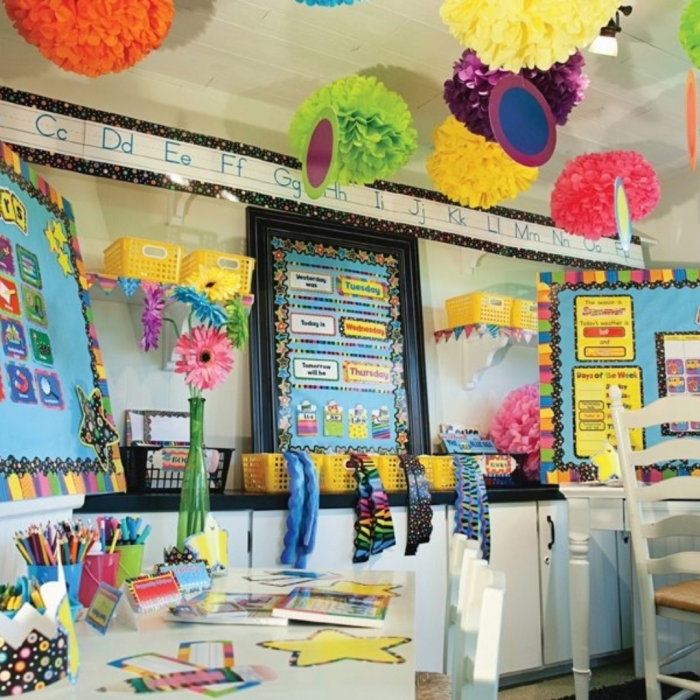
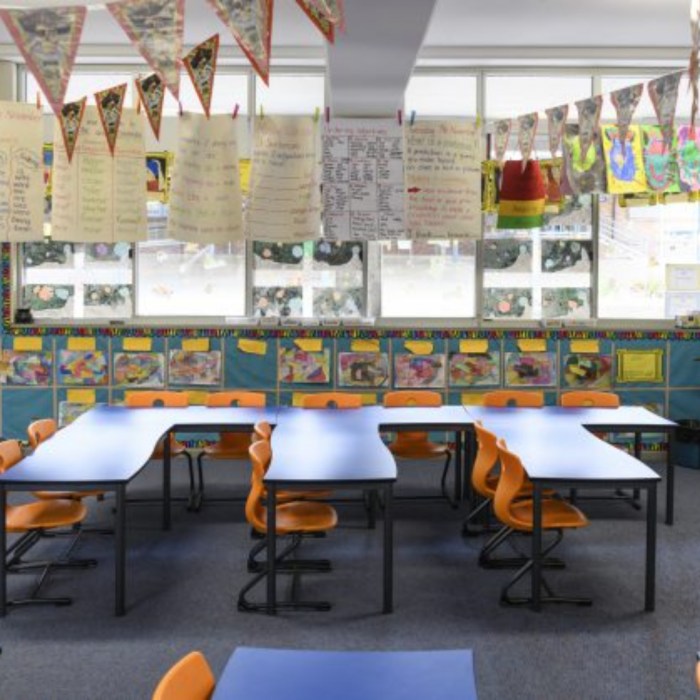
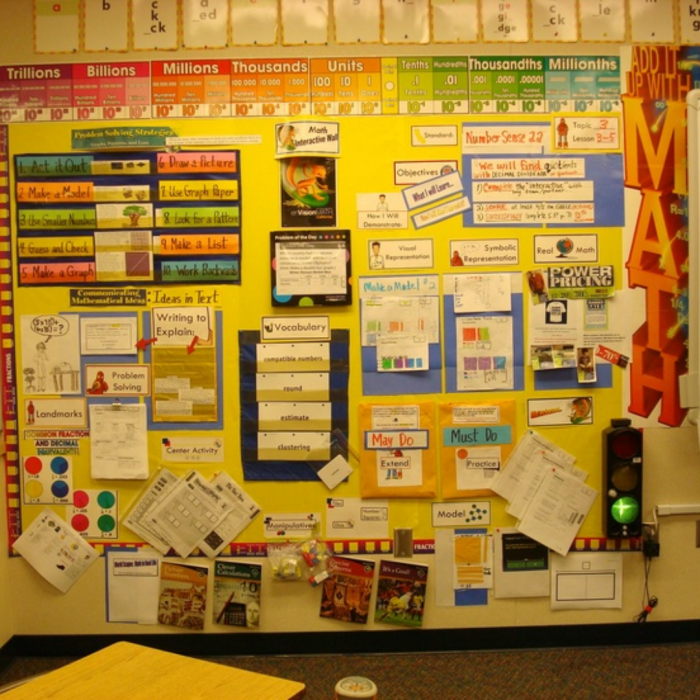
- Consider “display decay” – are all of your classroom displays complete or have they decayed over time? This could be pieces falling off or moving out of place. Small details like this can be incredibly distracting for children and will direct their focus away from learning.
- Could your displays be considered over or under-stimulating? A good display should be used to help consolidate learning and prompt new learning. Ensure that nothing is hanging from ceilings and there are no obvious questions on displays or giant mind maps. Get inspired by taking a look at our blog: 10 Classroom, Display Ideas to Create An Engaging Learning Environment

Auditory Sensory Needs – Sound
The best way to start is again by doing a sensory audit of your setting from each seat that a child sits in to establish what each child can hear and potentially be distracted by. Once again it can be beneficial to think about yourselves and the way you prefer to operate. When driving around a tricky area to navigate do you prefer blasting heavy metal or do you require silence to concentrate?
- The use of music is often discussed within topics of supporting concentration and learning. However, studies have found that music in the classroom will only act as a distraction except in the case of PE or art classes.
- Try to make instructions as explicit as possible to assist in processing. For example: “Please walk” instead of “Don’t run”
- Similarly, children’s attention is divided, so try and issue single instructions rather than reeling off a list of things. For children with autism and sensory needs, consider using tools such as communication cards or a visual timetable.
- Finally, consider visual reminders as opposed to verbal instruction such as hand washing images above the sinks rather than asking each child to wash their hands.

Olfactory Sensory Needs – Smell
Lastly and perhaps the most overlooked area in terms of sensory processing in the classroom is smells. The first place to start is by taking time to consider how the room smells and how you yourself smell. Heavy perfumes for example can cause distraction. This is particularly the case for children with a single-attention focus such as children with autistic or ADHD traits.
In the same way that perfume may cause a distraction, consider smells around lunchtime in your school. Experiment with closing the doors or windows around this particular period to capitalise on learning time and avoid children’s minds wandering off towards lunch.
Final thoughts
There are many, many things that be done to support children’s sensory and physical needs and encourage learning. However, a lot of these just might not be feasible and that is okay. Creating a safe space where children can self-regulate doesn’t have to be a monumental or expensive task. Simply converting a tuff tray into a dark den can make a perfect (and easy-to-assemble) area for sensory exploration in the corner of the classroom. Add resources such as sensory carpets and colour-changing projectors to illuminate the space and set a calming mood.

In this blog, we have suggested a few starting points which you can use as a guide to address sensory needs in the classroom. Above all it is important to remember 4 key things:
- Is everything in your classroom necessary? Assess if things are prompting learning, are they contextual etc
- Make a judgement, you know your children well. What do individual children need, do they need their own private space to work? Can they work with white space only?
- Consider time outside the classroom i.e. undirected time or toilet trips. This can be a source of stress for children. Instead consider setting up organised activities, quiet zones, friendship benches or buddy children up during playtime to increase and encourage social interaction.

